
Per-and polyfluoroalkyl substances, better known as PFAS, are a group of chemicals that have raised a lot of concern among the general public and authorities. They are known as ‘Forever Chemicals’ because of their resistance to degradation. A recent study about PFAS contamination in drinking water indicates that these chemicals are present in 45% of tap water across the United States (Smalling et al., 2023). A similar study was conducted in Quebec, Canada, where 99.3% of tap water came positive for at least one PFAS (Monuz et al., 2023).
The spread of emerging contaminants such as PFAS endangers public health and has a lot of negative impacts on the environment. Thus, it is crucial to take effective measures to deal with these types of contaminants. This article will provide you with information about the nature of perfluoroalkyl and polyfluoroalkyl substances. These synthetic substances have been used in different industries for a variety of products since the 1940s (ATSDR, 2022). We will explain the sources of this pollution and how they end up in our water resources. Finally, The health impacts of PFAS contamination and its toxicity in wildlife are discussed.
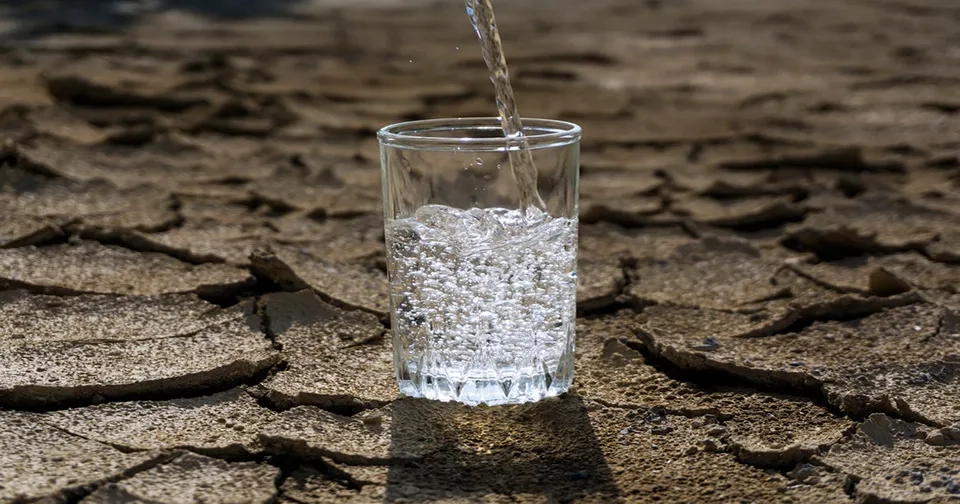
1. What Are PFAS Chemicals?
PFAS compounds are a wide range of man-made substances with carbon-fluorine bonds. While there is no universal definition for the term PFAS, the Organization for Economic Co-operation and Development (OECD) recommended a revised general definition (OECD, 2021):
“PFASs are defined as fluorinated substances that contain at least one fully fluorinated methyl or methylene carbon atom (without any H/Cl/Br/I atom attached to it), i.e., with a few noted exceptions, any chemical with at least a perfluorinated methyl group (-CF3) or a perfluorinated methylene group (-CF2-) is a PFAS.”
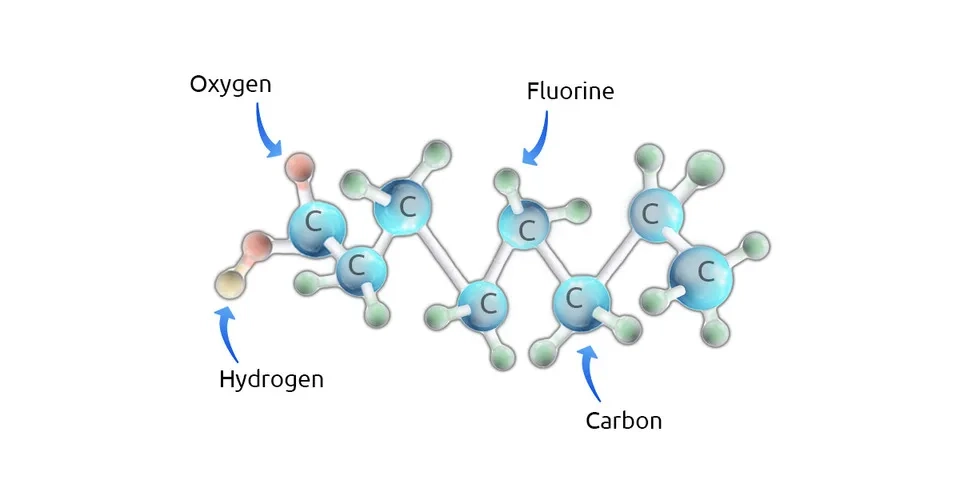
The Environmental Protection Agency (EPA) identified 14735 compounds as PFAS in 2022 (CompTox, 2022). They are generally divided into polymers (a large molecule that consists of a chain of smaller molecules) and non-polymer substances. Non-polymers are either perfluoroalkyl (completely fluorinated carbon chain) or polyfluoroalkyl (partially fluorinated carbon chain) (ITRC, 2022). The most widely known PFAS chemicals are Perfluorooctonic Acid (PFOA) and Perfluorooctane Sulfonate (PFOS). Both are subsets of the perfluoroalkyl group and they are made of a chain with eight carbons (Fragki et al., 2020; EPA, 2017).
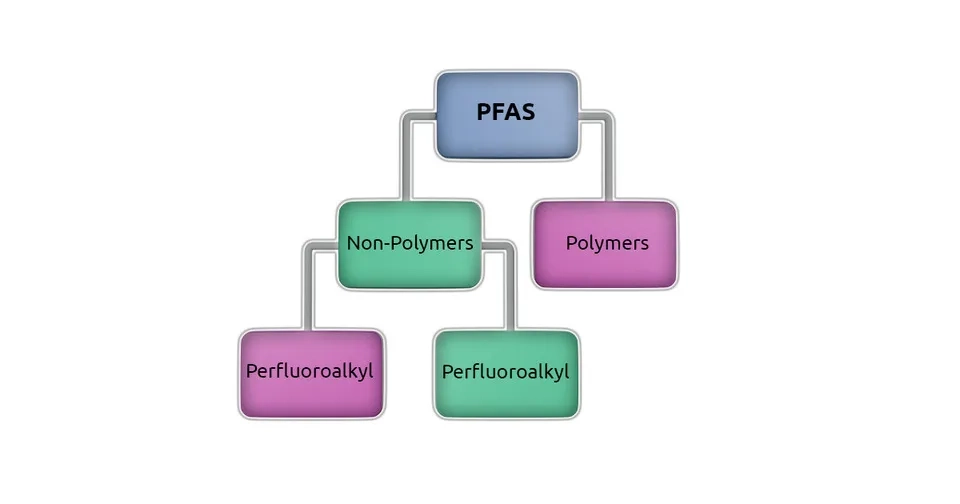
2. Sources of Contamination
PFAS has been used for a variety of applications, and it can be released to the environment from different sources. These sources can be classified into 5 major groups (Salvatore et al., 2022; Meegoda et al., 2020; Ismail et al., 2023; Gaines, 2022):
Firefighting foam discharge sites: Fluorinated Aqueous Film-Formin Foams (AFFF) are effective firefighting substances used for liquid flames caused by fuels. PFAS substances are used in Class B AFFFs. Firefighting foams have been stored and used in airports, military facilities, and any area with flammable liquid hazards. These substances can contaminate the soil and water resources around these facilities.
Industries: PFAS substances were widely used or produced in industries in the 20th century, and they were released into the environment before strict regulations were established. These chemicals are found in numerous products, such as cosmetics, paints, cleaning products, packaging products, pesticides, electronics, nonstick pans, etc.
Wastewater: WasteWater Treatment Plants (WWTPs) are a major source of PFAS contamination. Collected wastewater from domestic and industrial sources can contain PFAS substances. In fact, the concentration of PFAS in wastewater can be 1000 times higher than in water bodies. Since wastewater treatment facilities are not designed for PFAS removal, wastewater effluent can be polluted with these chemicals.
Solid Waste Management and Landfills: Since PFAS is present in many consumer products, solid waste management facilities are another source of PFAS contamination. PFAS exposure can occur through landfills, incinerators, and recycling facilities. Landfill leachate may contain high levels of PFAS, and its accidental leakage can contaminate groundwater resources.
Land applications: PFAS substances accumulate in WWTP sludge which is used for agriculture and land applications. Agricultural use of polluted biosolids can contaminate the soil and agricultural products. Therefore, these substances can infiltrate groundwater or find their way to the surface water.
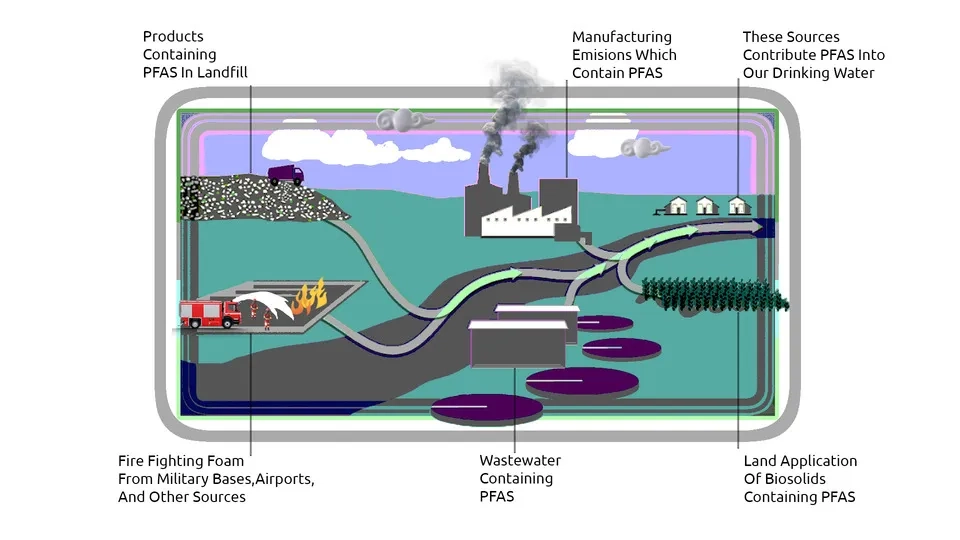
3. Human and Environmental Impacts of PFAS
PFAS contamination is associated with some potential diseases as well as negative impacts on the environment. Bioaccumulation of PFAS is a major problem in the ecosystem. Adverse effects of PFAS are reported on many animals, including mammals, reptiles, fish, and birds. Based on laboratory studies, animals exposed to PFAS are more susceptible to liver damage and immune dysfunction. These chemicals can negatively affect newborn animals. Decreased birth weight, developmental delay, and newborn deaths are reported among exposed animals (Betts, 2007). Because of their stability and dispersion, these chemicals can build up in the food chain. In a study on tiger snakes in Australian wetlands, snakes that have been exposed to PFAS were in poor body conditions compared to other tiger snakes. This study suggests that snakes, as the top predators, are mostly exposed to PFAS through their prey (Lettoof et al., 2023).
PFAS can transfer from polluted water to the soil. Since these chemicals can easily dissolve in water, they are absorbed by plants and accumulate in them. Plant exposure to PFAS is related to an increased production of Reactive Oxygen Species (ROS). Low levels of PFAS might enhance plant growth, while higher concentrations can be undesirable for plants. High production of ROS results in cellular damage to plants due to its oxidative effects on DNA, proteins, and lipids (Li et al., 2022). In a study, an increased growth of wheat roots was observed after 7 days when the concentration was 0.1 ppm. However, at higher concentrations (200 ppm), the root growth decreased (Qu et al., 2010).
Because of strong carbon-fluorine bonds, these chemicals are very persistent, and they are known as non-metabolizable in human bodies. For instance, PFOA and PFOS are seen in human urine and bile in their initial forms (Brase et al., 2021). Human exposure to PFAS might be related to the following health issues (Fenton et al., 2020):
Suppressed immune system and lower vaccine response
Thyroid disease and dysfunction
Liver disease
Increased risk of kidney and testicular cancer
Higher cholesterol levels and obesity
Related to female infertility and lower birthweight for newborns
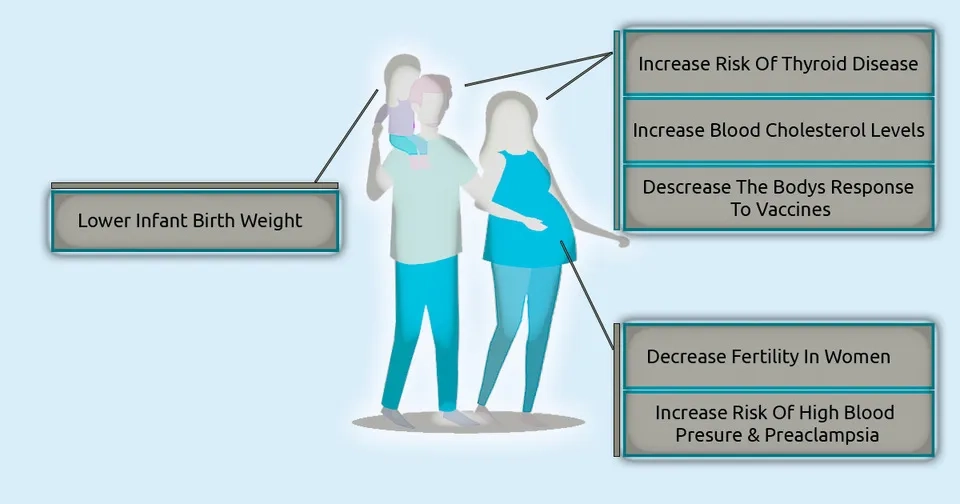
4. Conclusion
PFAS, as an emerging pollutant, has caused many worries among the general public and officials. Many people in developed countries are exposed to PFAS contamination in drinking water, food, and the air. Researchers have shown interest in identifying the nature of these synthetic chemicals and studying their effects on humans and the ecosystem. Almost 15,000 chemicals are identified as PFAS by the EPA. There are multiple sources of releasing these pollutants, but the major points are firefighting foams, industries, solid waste facilities, land applications, and wastewater treatment plants. These chemicals are known for their persistence in nature, and they can bioaccumulate in animals, plants, and humans. Studies have suggested that PFAS may be very toxic to humans. This calls for authorities to fund related studies and impose strict regulations on industries and other sources of PFAS contamination. In addition to that, practical methods must be developed for PFAS removal from our drinking water as an important source of human exposure.